SsangYong Korando vs MG MGS5 EV – Which model is better for everyday use?
Everyday use, family trips or long-distance drives – here’s where the differences show.
Discover whether SsangYong Korando or MG MGS5 EV fits your lifestyle better.
Costs and Efficiency:
When it comes to price and running costs, the biggest differences usually appear. This is often where you see which car fits your budget better in the long run.
SsangYong Korando has a evident advantage in terms of price – it starts at 27000 £, while the MG MGS5 EV costs 32600 £. That’s a price difference of around 5571 £.
In terms of energy consumption, the advantage goes to the MG MGS5 EV: with 15.50 kWh per 100 km, it’s minimal more efficient than the SsangYong Korando with 16.80 kWh. That’s a difference of about 1.30 kWh.
As for range, the MG MGS5 EV performs evident better – achieving up to 480 km, about 141 km more than the SsangYong Korando.
Engine and Performance:
Power, torque and acceleration say a lot about how a car feels on the road. This is where you see which model delivers more driving dynamics.
When it comes to engine power, the MG MGS5 EV has a somewhat edge – offering 231 HP compared to 190 HP. That’s roughly 41 HP more horsepower.
In acceleration from 0 to 100 km/h, the MG MGS5 EV is evident quicker – completing the sprint in 6.30 s, while the SsangYong Korando takes 8.40 s. That’s about 2.10 s faster.
In terms of top speed, the SsangYong Korando performs minimal better – reaching 191 km/h, while the MG MGS5 EV tops out at 190 km/h. The difference is around 1 km/h.
There’s also a difference in torque: SsangYong Korando pulls hardly perceptible stronger with 360 Nm compared to 350 Nm. That’s about 10 Nm difference.
Space and Everyday Use:
Whether family car or daily driver – which one offers more room, flexibility and comfort?
Both vehicles offer seating for 5 people.
In curb weight, SsangYong Korando is somewhat lighter – 1517 kg compared to 1710 kg. The difference is around 193 kg.
In terms of boot space, the SsangYong Korando offers a bit more room – 551 L compared to 453 L. That’s a difference of about 98 L.
In maximum load capacity, the MG MGS5 EV performs somewhat better – up to 1441 L, which is about 193 L more than the SsangYong Korando.
When it comes to payload, SsangYong Korando slightly takes the win – 463 kg compared to 395 kg. That’s a difference of about 68 kg.
Who wins the race?
The MG MGS5 EV proves to be leads convincingly overall and therefore becomes our DriveDuel Champion!
MG MGS5 EV is the better all-rounder in this comparison.
MG MGS5 EV
SsangYong Korando
The SsangYong Korando offers a blend of contemporary design and practicality, making it an appealing choice for urban adventurers. Its spacious interior and comfortable seating ensure a pleasant driving experience for both driver and passengers. With its reliable performance and advanced features, the Korando stands out in the competitive SUV market.
details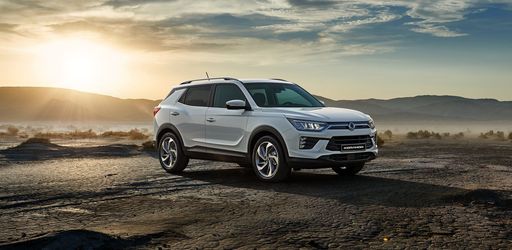 @ Ssangyong
@ Ssangyong
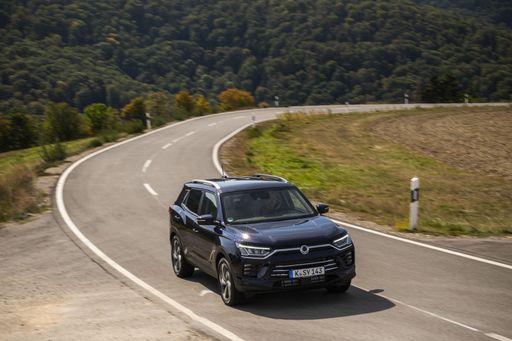 @ Ssangyong
@ Ssangyong
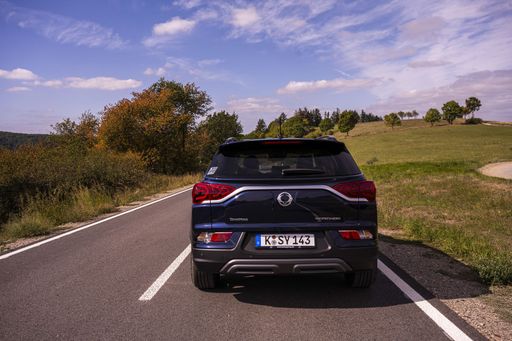 @ Ssangyong
@ Ssangyong
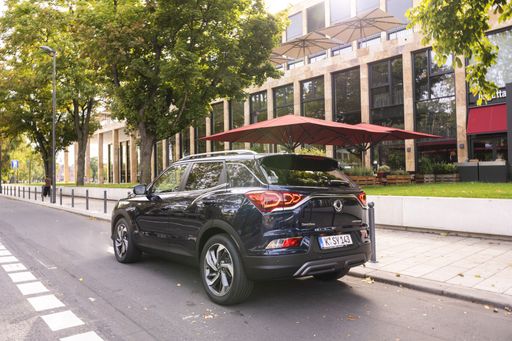 @ Ssangyong
@ Ssangyong
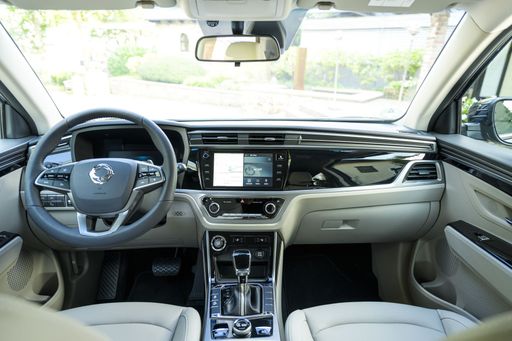 @ Ssangyong
@ Ssangyong
MG MGS5 EV
The MG5 EV stands out as one of the few fully electric estate cars available in today's market. Known for its practicality, it offers ample space and a smooth driving experience, perfect for families looking to transition to an electric vehicle without compromising on roominess or comfort. Its sleek design and competitive pricing make it an attractive choice for eco-conscious drivers who value both style and sustainability.
details

|
|
|
|
|
Costs and Consumption |
|
|---|---|
|
Price
27000 - 42000 £
|
Price
32600 - 38600 £
|
|
Consumption L/100km
7.5 - 8.6 L
|
Consumption L/100km
-
|
|
Consumption kWh/100km
16.80 kWh
|
Consumption kWh/100km
15.5 - 16.6 kWh
|
|
Electric Range
339 km
|
Electric Range
340 - 480 km
|
|
Battery Capacity
-
|
Battery Capacity
47.1 - 62.1 kWh
|
|
co2
0 - 197 g/km
|
co2
0 g/km
|
|
Fuel tank capacity
50 L
|
Fuel tank capacity
-
|
Dimensions and Body |
|
|---|---|
|
Body Type
SUV
|
Body Type
SUV
|
|
Seats
5
|
Seats
5
|
|
Doors
5
|
Doors
5
|
|
Curb weight
1517 - 1840 kg
|
Curb weight
1710 - 1800 kg
|
|
Trunk capacity
551 L
|
Trunk capacity
453 L
|
|
Length
4450 - 4465 mm
|
Length
4476 mm
|
|
Width
1870 mm
|
Width
1849 mm
|
|
Height
1620 - 1645 mm
|
Height
1621 - 1633 mm
|
|
Max trunk capacity
1248 L
|
Max trunk capacity
1441 L
|
|
Payload
410 - 463 kg
|
Payload
370 - 395 kg
|
Engine and Performance |
|
|---|---|
|
Engine Type
Petrol, Electric
|
Engine Type
Electric
|
|
Transmission
Manuel, Automatic
|
Transmission
Automatic
|
|
Transmission Detail
Manual Gearbox, Automatic Gearbox, Reduction Gearbox
|
Transmission Detail
Reduction Gearbox
|
|
Drive Type
Front-Wheel Drive, All-Wheel Drive
|
Drive Type
Rear-Wheel Drive
|
|
Power HP
163 - 190 HP
|
Power HP
170 - 231 HP
|
|
Acceleration 0-100km/h
8.40 s
|
Acceleration 0-100km/h
6.3 - 8 s
|
|
Max Speed
156 - 191 km/h
|
Max Speed
170 - 190 km/h
|
|
Torque
260 - 360 Nm
|
Torque
250 - 350 Nm
|
|
Number of Cylinders
4
|
Number of Cylinders
-
|
|
Power kW
120 - 140 kW
|
Power kW
125 - 170 kW
|
|
Engine capacity
1497 cm3
|
Engine capacity
-
|
General |
|
|---|---|
|
Model Year
2021 - 2023
|
Model Year
2025
|
|
CO2 Efficiency Class
F, G, A
|
CO2 Efficiency Class
A
|
|
Brand
SsangYong
|
Brand
MG
|
What drive types are available for the SsangYong Korando?
Available configurations include Front-Wheel Drive or All-Wheel Drive.
The prices and data displayed are estimates based on German list prices and may vary by country. This information is not legally binding.
